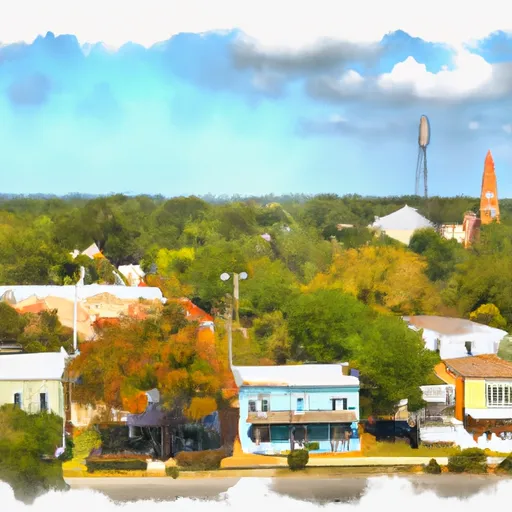-
 Snoflo Premium
Snoflo Premium
Get unlimited access to all our content
With no Ad interruptions! - Start Your Free Trial Login with existing account
Quitman
Eden Index
Climate
7.7
•
Recreation
1.3
•
Community
1.8
•
Safeguard
4.0/10

Quitman, Georgia is a charming city located in Brooks County, in the southern part of the state. Known for its historical landmarks and welcoming community, Quitman offers a unique blend of rural beauty and small-town charm. The climate in Quitman is classified as humid subtropical, characterized by hot and humid summers, mild winters, and ample rainfall throughout the year.
Quitman is home to several water bodies, including the Withlacoochee River, which provides hydrology constituents to the area. The river offers opportunities for fishing, boating, and kayaking, allowing outdoor enthusiasts to explore the scenic beauty and diverse wildlife of the region.
Besides the river, Quitman boasts a variety of outdoor recreation opportunities. The local parks and trails provide perfect settings for hiking, picnicking, and birdwatching. Many residents and visitors also take advantage of the nearby Jefferson Davis State Historic Site, which offers educational tours and recreational activities.
In summary, Quitman, Georgia offers a welcoming community, a moderate climate, and ample opportunities for outdoor recreation, making it an ideal destination for nature lovers and those seeking a tranquil escape.
What is the Eden Index?
The Snoflo Eden Index serves as a comprehensive rating system for regions, evaluating their desirability through a holistic assessment of climate health, outdoor recreation opportunities, and natural disaster risk, acknowledging the profound impact of these factors on livability and well-being.
Climate Health Indicator (CHI): 7.7
Quitman receives approximately
1363mm of rain per year,
with humidity levels near 81%
and air temperatures averaging around
20°C.
Quitman has a plant hardyness factor of
8, meaning
plants and agriculture in this region tend to thrive here all year round.
By considering the ideal temperature range, reliable water supplies, clean air, and stable seasonal rain or snowpacks, the Climate Health Indicator (CHI) underscores the significance of a healthy climate as the foundation for quality living.
A healthy climate is paramount for ensuring a high quality of life and livability in a region, fostering both physical well-being and environmental harmony. This can be characterized by ideal temperatures, reliable access to water supplies, clean air, and consistent seasonal rain or snowpacks.
Weather Forecast
Streamflow Conditions
Suwannee
Area Rivers
Suwannee
Snowpack Depths
Suwannee
Reservoir Storage Capacity
Suwannee
Groundwater Levels
Recreational Opportunity Index (ROI): 1.3
The Recreational Opportunity Index (ROI) recognizes the value of outdoor recreational options, such as parks, hiking trails, camping sites, and fishing spots, while acknowledging that climate plays a pivotal role in ensuring the comfort and consistency of these experiences.
Access to outdoor recreational opportunities, encompassing activities such as parks, hiking, camping, and fishing, is crucial for overall well-being, and the climate plays a pivotal role in enabling and enhancing these experiences, ensuring that individuals can engage in nature-based activities comfortably and consistently.
Camping Areas
| Campground | Campsites | Reservations | Toilets | Showers | Elevation |
|---|---|---|---|---|---|
| Reed Bingham State Park | None | 203 ft | |||
| Warner Robins AFB Military | None | 348 ft |
Nearby Fishing
Catastrophe Safeguard Index (CSI):
The Catastrophe Safeguard Index (CSI) recognizes that natural disaster risk, encompassing floods, fires, hurricanes, and tornadoes, can drastically affect safety and the overall appeal of an area.
The level of natural disaster risk in a region significantly affects safety and the overall livability, with climate change amplifying these risks by potentially increasing the frequency and intensity of events like floods, fires, hurricanes, and tornadoes, thereby posing substantial challenges to community resilience and well-being.
Community Resilience Indicator (CRI): 1.8
The Community Resilience Indicator (CRI) recognizes that education, healthcare, and socioeconomics are crucial to the well-being of a region. The CRI acknowledges the profound impact of these elements on residents' overall quality of life. By evaluating educational resources, healthcare accessibility, and economic inclusivity, the index captures the essential aspects that contribute to a thriving community, fostering resident satisfaction, equity, and social cohesion.

